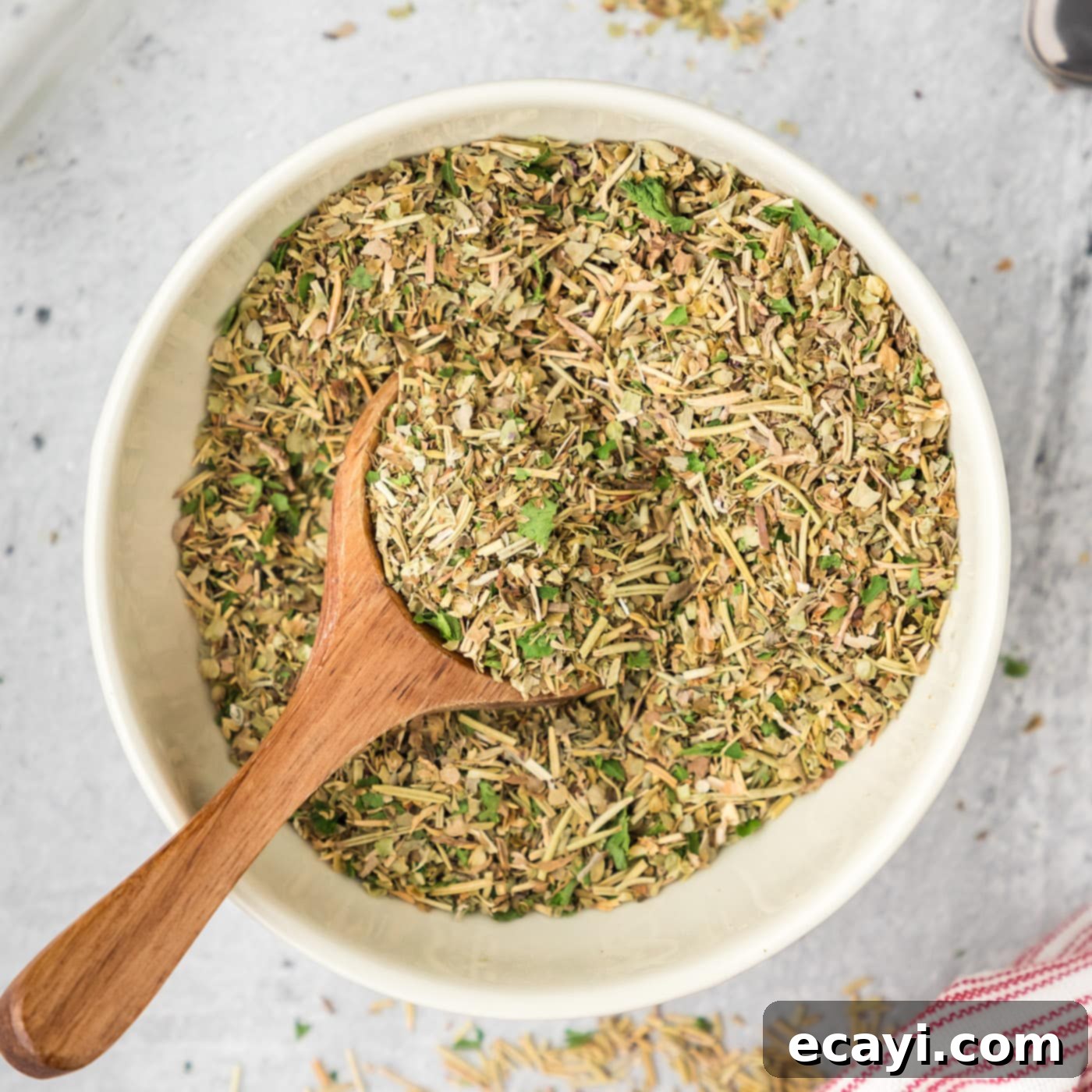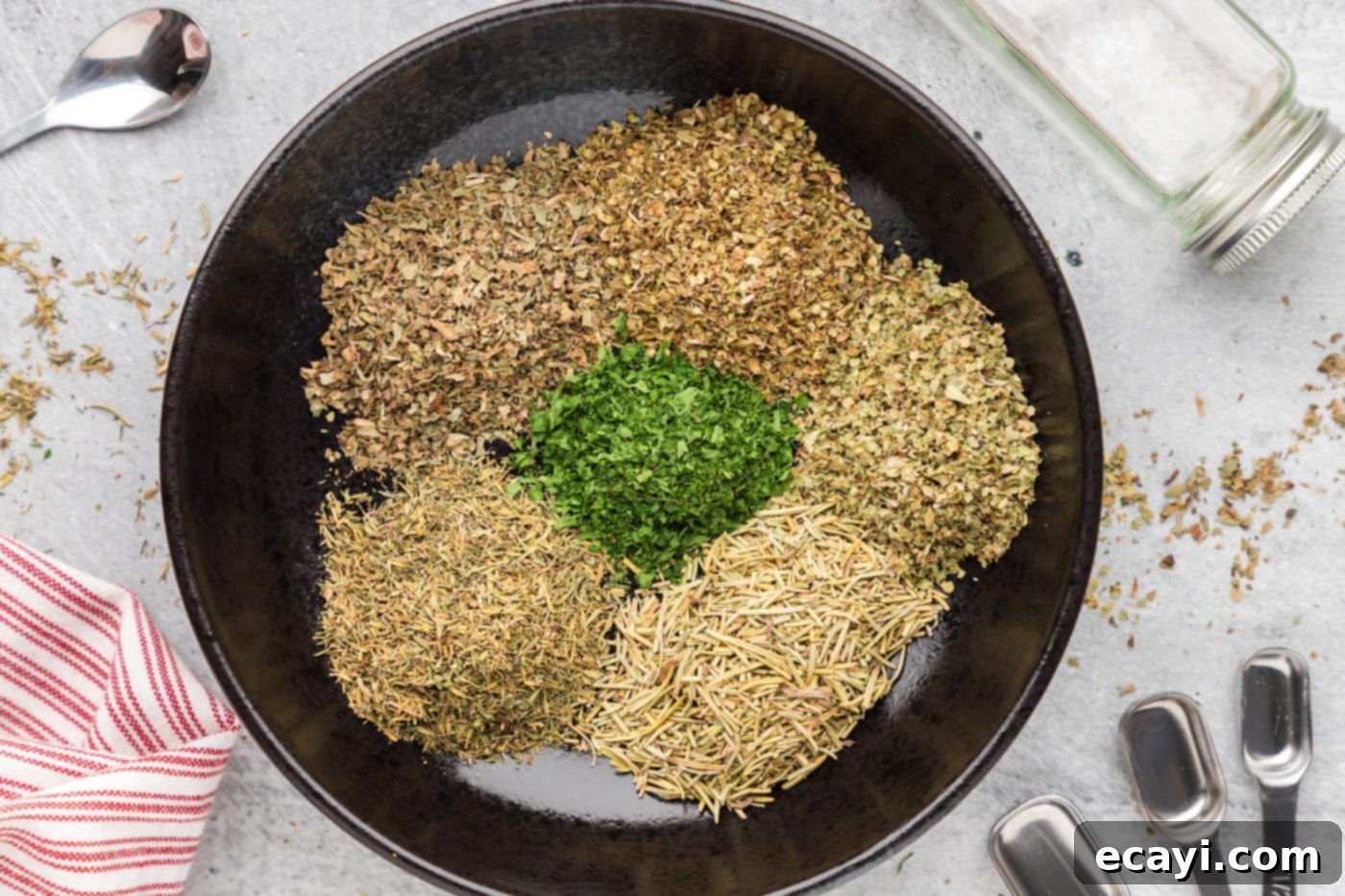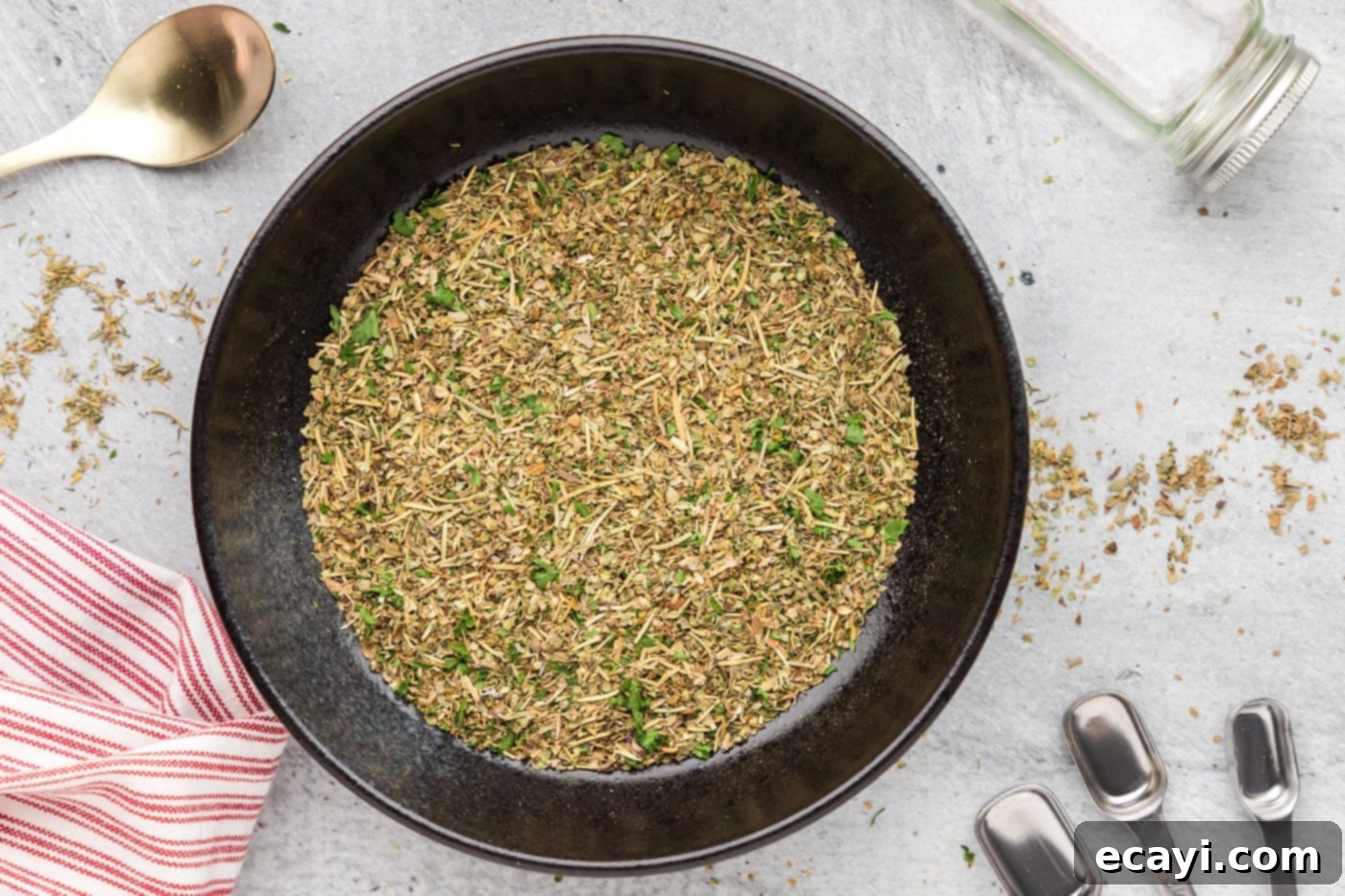The Best Homemade Italian Seasoning Blend: Your Essential All-Purpose Herb Mix
Forget store-bought blends! Crafting your own homemade Italian seasoning is a simple yet incredibly rewarding endeavor. This aromatic mix of dried herbs is a kitchen essential, elevating a vast array of savory dishes with its vibrant, earthy, and subtly peppery notes. In just minutes, you can create a superior blend that brings authentic Italian flavor right to your fingertips, ready to transform everyday meals into culinary delights. It’s truly a versatile staple for any home cook, promising freshness and control over your ingredients.
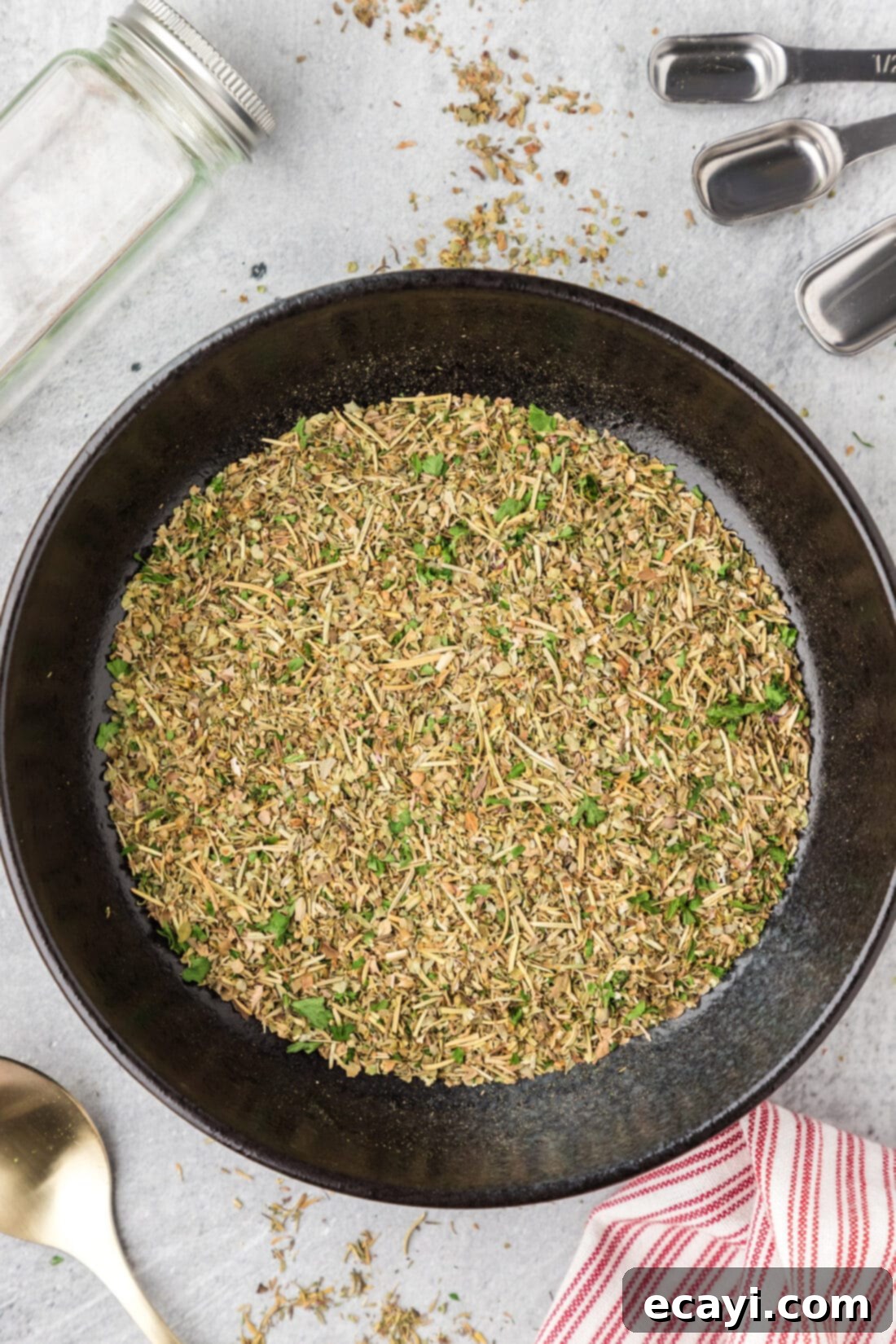
Why Making Your Own Italian Seasoning Works (and Why You’ll Love It!)
Italian seasoning is a staple blend of dried oregano, basil, thyme, rosemary, marjoram, and parsley, bringing wonderfully earthy and aromatic flavors to all sorts of savory dishes. Making your own seasoning blends from scratch offers several significant advantages over relying on pre-packaged options. Firstly, you gain complete control over the ingredients. This means no artificial fillers, anti-caking agents, or excessive sodium often found in commercial blends. You know exactly what’s going into your food, ensuring a purer, healthier, and more natural flavor that truly shines.
Secondly, homemade blends are often much fresher. Dried herbs, when stored correctly, retain their potency for longer than pre-mixed spices that might have been sitting on shelves for months or even years. The vibrant aroma and robust flavor profile of a freshly mixed blend are simply incomparable and will genuinely elevate your cooking. Lastly, it’s incredibly cost-effective. Buying individual dried herbs and mixing them yourself is typically far more economical than purchasing specialized seasoning mixes. Plus, it eliminates the repetitive measuring of individual spices every time you cook, saving precious time and effort in the kitchen. This particular Italian seasoning recipe is designed to be effortlessly simple and universally applicable, making it an indispensable addition to your spice rack. It’s the all-purpose seasoning of the dried herb world, meaning it complements an incredibly wide variety of dishes, from a simple dash on bread to enriching complex sauces and main courses.
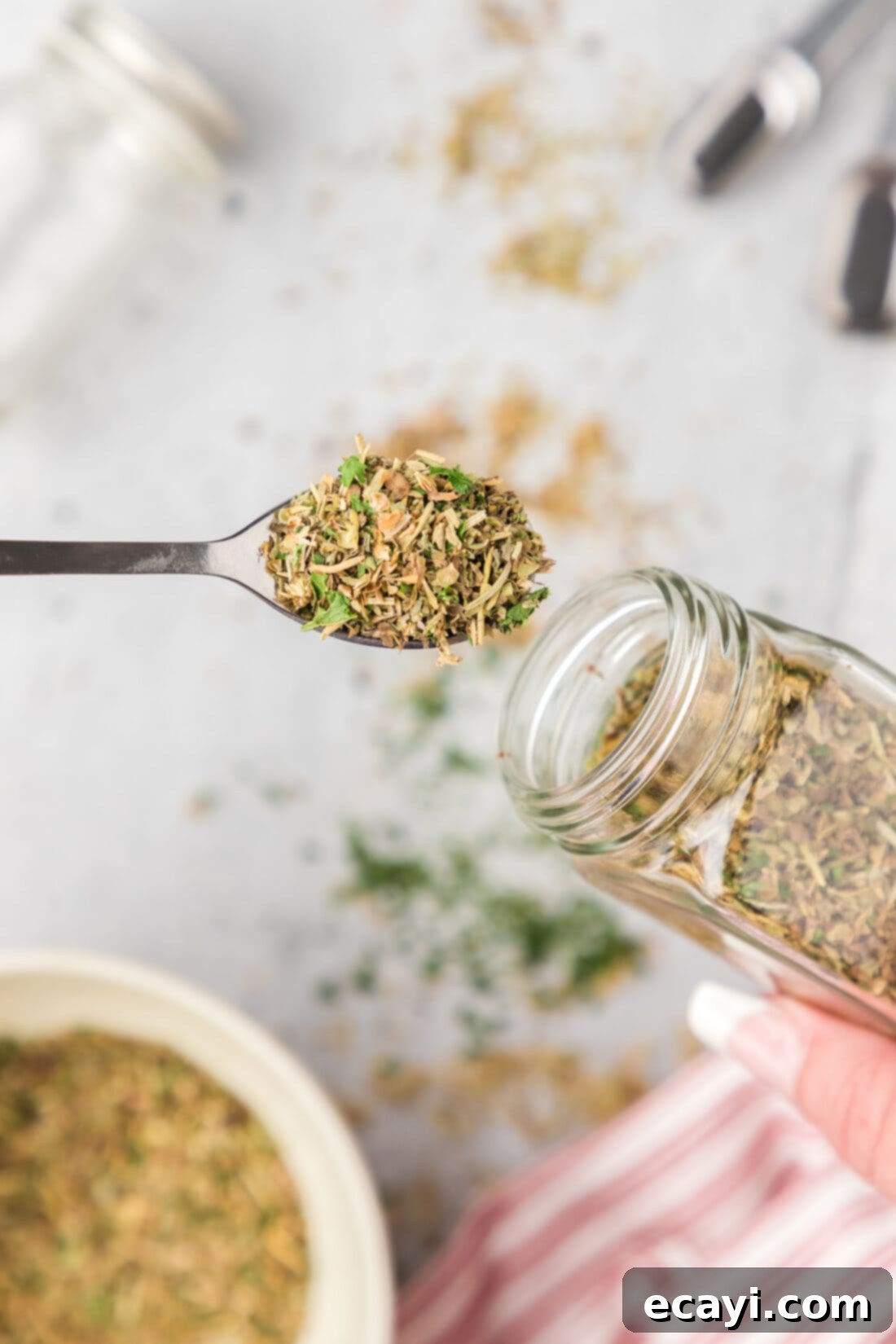
Key Ingredients for Your Essential Italian Seasoning Blend
The beauty of Italian seasoning lies in its balanced blend of classic Mediterranean herbs. Here’s a closer look at the key components that create this flavorful mix:
- Dried Oregano: Often considered the backbone of Italian cuisine, oregano offers a robust, earthy, and slightly bitter flavor with hints of mint and pepper. It’s incredibly versatile and pairs well with tomatoes, meats, and vegetables.
- Dried Basil: Sweet, aromatic, and slightly peppery, basil contributes a distinctive freshness that is quintessential to Italian dishes. It complements oregano beautifully, adding a layer of warmth and subtle sweetness.
- Dried Thyme Leaves: Thyme brings a subtle, earthy, and slightly floral note to the blend. Its delicate yet persistent flavor helps to round out the more dominant herbs, adding depth and complexity.
- Dried Rosemary: With its strong, piney, and slightly camphoraceous aroma, rosemary adds a pungent, woody flavor that is particularly good with roasted meats and potatoes. A little goes a long way, providing a sophisticated touch.
- Dried Marjoram: Closely related to oregano, marjoram offers a milder, sweeter, and more floral flavor profile. It softens the sharpness of other herbs and adds a gentle, aromatic complexity to the mix.
- Dried Parsley: Bright, fresh, and slightly peppery, parsley acts as a unifying element, adding a touch of herbaceousness without overpowering the other flavors. It’s an excellent enhancer for overall savoriness and color.
You can find all precise measurements and detailed instructions in the printable recipe card at the end of this post.
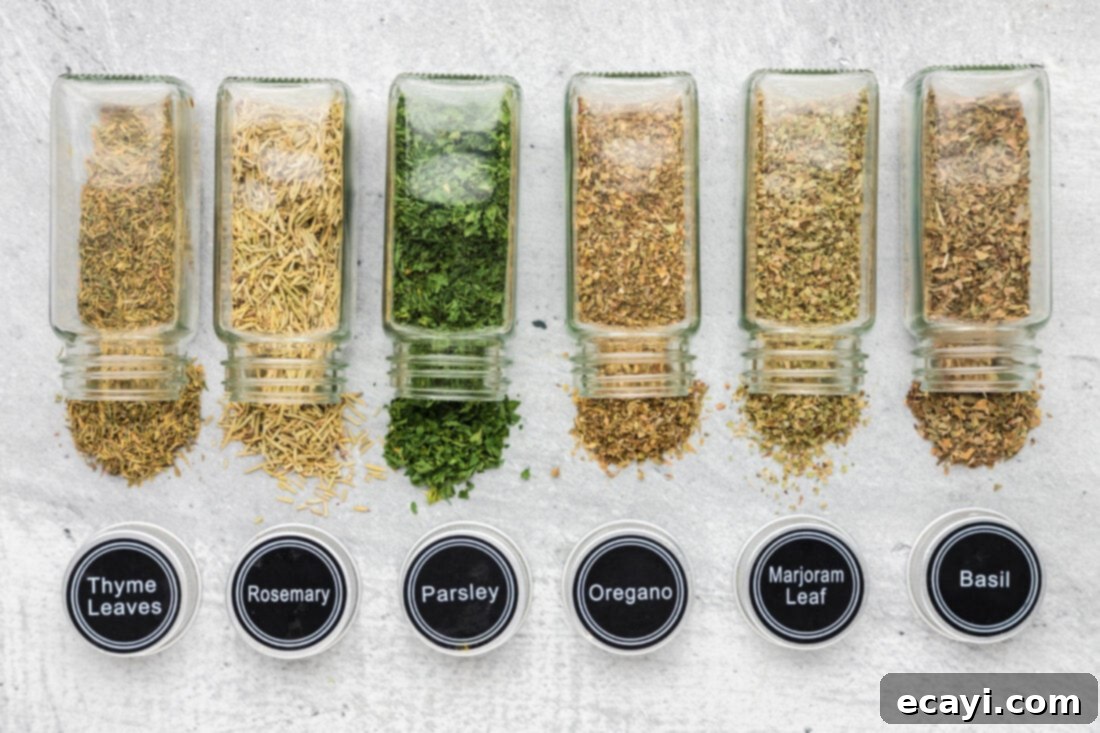
Ingredient Information and Customization Tips
HERBS – For this homemade Italian seasoning blend, using dried herbs is absolutely paramount. Fresh herbs, while wonderful in their own right, have a significantly higher moisture content, which would lead to spoilage and mold if mixed and stored as a dry seasoning blend. Dried herbs are essential for creating a stable, long-lasting mix that retains its intense flavor and aroma for extended periods. When selecting your dried herbs, aim for good quality and check their expiration dates to ensure maximum potency.
While the classic blend outlined above provides a perfect, balanced starting point, feel free to customize it to suit your personal preferences or specific dietary needs. For an added layer of savory depth, consider incorporating a teaspoon of garlic powder or half a teaspoon of onion powder for every two tablespoons of the main herb blend. These aromatics are common in Italian cooking and will enhance the overall savory profile. If you enjoy a bit of warmth or a subtle kick, a pinch of red pepper flakes can introduce a delightful heat. For a more floral and slightly citrusy note, a tiny touch of dried **lavender** or **fennel seeds** (lightly crushed) can be a unique addition, though these deviate from the strictly traditional Italian profile. Ensure any additions are also dried and finely ground if necessary for a smooth, consistent blend. Remember, the best seasoning is the one that perfectly matches your taste!
How to Easily Make Homemade Italian Seasoning
These step-by-step photos and instructions are here to help you visualize how to make this recipe. You can Jump to Recipe to get the printable version of this recipe, complete with measurements and instructions at the bottom.
- Combine all ingredients thoroughly in a mixing bowl. Use a spoon or a small whisk to ensure the herbs are perfectly blended. The goal is an even distribution of all the herbs, guaranteeing that every spoonful of your blend delivers a consistent and balanced flavor profile. This step is quick but essential for the seasoning’s effectiveness.


- Store your freshly mixed seasoning in an airtight container, such as a dedicated spice jar, for up to 12-24 months. Proper storage is key to preserving its freshness and potency, ensuring you get the most vibrant flavor from your homemade blend.
Frequently Asked Questions & Expert Tips for Your Italian Seasoning
Homemade Italian seasoning, when made exclusively with dried herbs, has an impressive shelf life. Store it in an airtight glass jar or container, kept in a cool, dark place, away from direct sunlight, heat, and moisture. A pantry or kitchen cabinet, ideally away from the stove, is the best location. Under these optimal conditions, your blend can last effectively for 1 to 2 years. The primary indicator that your seasoning has reached its limit is when its vibrant fragrance diminishes significantly. If you can no longer smell the distinct, lively aromas of the individual herbs, it’s time to refresh your batch for optimal flavor in your dishes. Glass containers are highly recommended over plastic for storing spices and seasonings because glass is non-porous and won’t absorb the flavors and aromas of the herbs, nor will it leach any plastic compounds into your blend over time. This helps maintain the purity and potency of your seasoning.
No, this recipe specifically calls for dried herbs, and it’s crucial to use them. Fresh herbs have a high moisture content, which would unfortunately lead to spoilage and mold if mixed and stored as a dry seasoning blend. This recipe is designed for a long-lasting, shelf-stable mix, which dried herbs provide. If you wish to use fresh herbs in your cooking, they should be added directly to your dish during preparation and not as part of this dry, stored blend.
For most applications, whole dried herbs (or already flaked varieties, which are common for basil, oregano, and parsley) are perfectly fine and offer a pleasant texture in dishes. However, if you prefer a finer powder for specific uses (like sprinkling on popcorn, as part of a smooth rub, or for a very fine sauce), you can gently grind the entire mixture in a spice grinder, coffee grinder (cleaned thoroughly), or a mortar and pestle after blending. Be careful not to over-grind, as this can prematurely release the herbs’ volatile oils, which might shorten their shelf life and potentially lead to a slightly bitter taste. A coarse grind is often sufficient.
This homemade blend stands out due to its superior freshness, the absence of artificial additives, and your complete control over the ingredients. Commercial Italian seasonings often contain anti-caking agents, excessive amounts of salt, or are made with older, less potent herbs that have lost much of their flavor. By making it yourself, you ensure vibrant, potent flavors, control the quality of each individual ingredient, and can even customize the ratios to perfectly suit your palate. This results in a more potent, pure, and flavorful seasoning experience that will truly elevate your culinary creations.
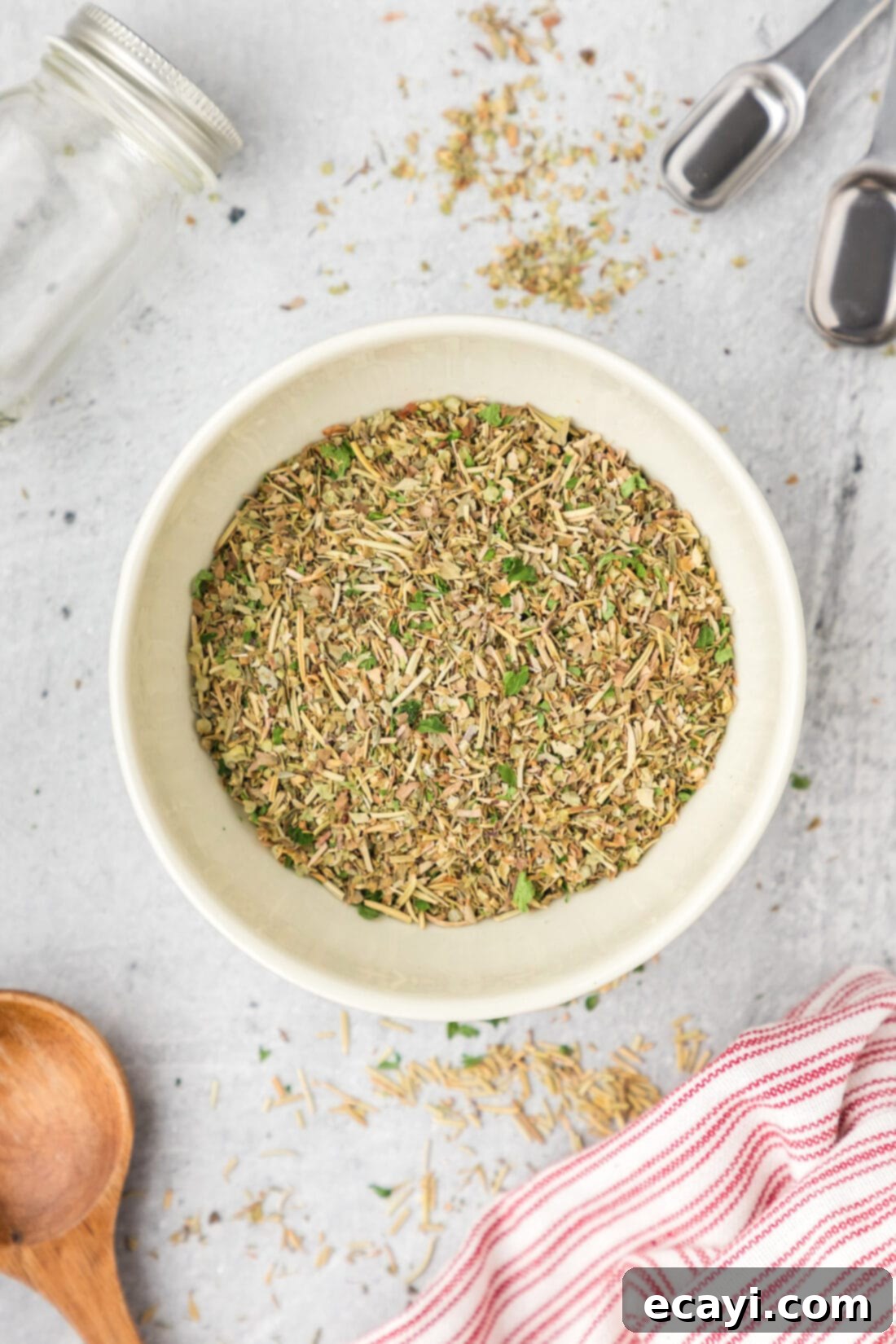
Creative Ways to Use Your Homemade Italian Seasoning
The versatility of homemade Italian seasoning truly knows no bounds, making it an indispensable tool in any kitchen. You can sprinkle it generously over **grilled, baked, or seared meats** like succulent chicken breasts, tender pork loin, or hearty beef roasts to infuse them with rich, aromatic Mediterranean flavor. It’s also a fantastic and easy addition to **marinades**, where its earthy notes can tenderize and deeply flavor seafood, poultry, or various vegetables, preparing them for grilling or baking.
Don’t just stop at main courses! Toss a liberal amount with your favorite **vegetables**—think vibrant broccoli florets, tender zucchini, colorful bell peppers, or roasted potatoes—before roasting or grilling for a burst of delicious Italian taste. Beyond savory dishes, consider mixing it with softened **butter** to create a mouth-watering spread for garlic bread, bruschetta, or crusty artisanal loaves. Incorporate it into hearty **soups, stews, and chili** for an added layer of warmth, depth, and complexity that will tantalize your taste buds. And, of course, it’s an absolute must for classic Italian dishes: stir it into your homemade **spaghetti sauce, creamy lasagna fillings**, a rich penne bolognese, or a fresh pizza sauce for that unmistakable authentic flavor. Its balanced profile means it complements an incredibly wide variety of cuisines, not just traditional Italian. Try it on scrambled eggs, in salad dressings, or even blended into breading for crispy fried chicken or fish. The possibilities are endless!
Explore More Homemade Seasoning Recipes
If you love the simplicity and superior flavor of this homemade Italian seasoning, you’ll definitely want to explore other homemade blends. Crafting your own spice mixes opens up a world of culinary possibilities, allowing you to tailor flavors to your exact preferences and avoid unnecessary additives often found in store-bought options. Once you experience the vibrant taste and freshness of homemade seasoning, you’ll rarely go back to pre-packaged varieties. Discover more delicious and easy-to-make blends to enhance your cooking:
- Chili Seasoning
- Taco Seasoning
- Cajun Seasoning
- Shrimp Seasoning
- All Purpose Seasoning
I love to bake and cook and share my kitchen experience with all of you! Remembering to come back each day can be tough, that’s why I offer a convenient newsletter every time a new recipe posts. Simply subscribe and start receiving your free daily recipes!
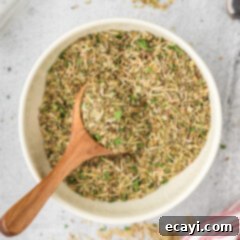
Homemade Italian Seasoning Blend
IMPORTANT – There are often Frequently Asked Questions within the blog post that you may find helpful. Simply scroll back up to read them!
Print It
Pin It
Rate It
Save ItSaved!
Ingredients
- 2 Tablespoons dried oregano
- 2 Tablespoons dried basil
- 2 Tablespoons dried thyme leaves
- 2 Tablespoons dried rosemary
- 2 Tablespoons dried marjoram
- 1 Tablespoon dried parsley
Things You’ll Need
-
Mixing bowl
-
Measuring spoons
-
Spice jar or other air-tight container with a lid
Before You Begin
- It’s important to use dried herbs as opposed to fresh to extend the shelf life and get the most out of your blend. Fresh herbs would introduce moisture and cause spoilage.
- You’re always welcome to throw in any other seasonings you find yourself reaching for often such as garlic powder, onion powder, or a pinch of red pepper flakes for an extra kick. Ensure any additions are also dried and finely ground for best results.
- For optimal flavor and longevity, ensure your dried herbs are fresh and potent. Check expiration dates before mixing.
Instructions
-
In a clean mixing bowl, measure out all the dried herbs. Use a spoon or whisk to combine all ingredients thoroughly until evenly distributed.
-
Transfer the freshly mixed Italian seasoning into an airtight container, such as a spice jar. Store in a cool, dark place away from direct sunlight and heat for up to 1-2 years to maintain its freshness and potency.
Expert Tips & FAQs
- Dried herbs can last for up to 2 years if stored properly. To get the longest life from your homemade blend, always keep it in an airtight container (preferably glass) at room temperature and away from direct sunlight, heat, and moisture. A dark cabinet or pantry is best.
- Once the blend is no longer fragrant, its shelf time has reached its limit, and it’s best to make a new batch for optimal flavor.
- Glass is preferable over plastic for storing spices and seasonings as it isn’t porous and won’t absorb or transfer flavors.
- For a finer powder, you can gently grind the mixed herbs in a spice grinder or with a mortar and pestle after blending.
Nutrition
The recipes on this blog are tested with a conventional gas oven and gas stovetop. It’s important to note that some ovens, especially as they age, can cook and bake inconsistently. Using an inexpensive oven thermometer can assure you that your oven is truly heating to the proper temperature. If you use a toaster oven or countertop oven, please keep in mind that they may not distribute heat the same as a conventional full sized oven and you may need to adjust your cooking/baking times. In the case of recipes made with a pressure cooker, air fryer, slow cooker, or other appliance, a link to the appliances we use is listed within each respective recipe. For baking recipes where measurements are given by weight, please note that results may not be the same if cups are used instead, and we can’t guarantee success with that method.
